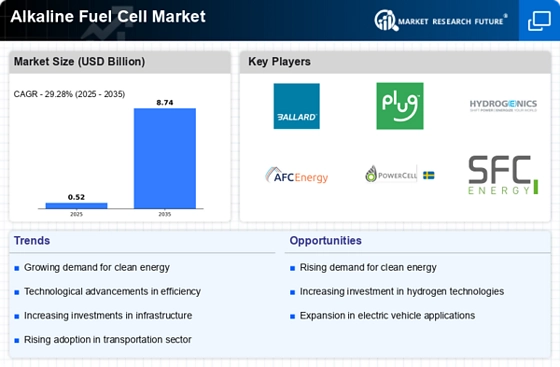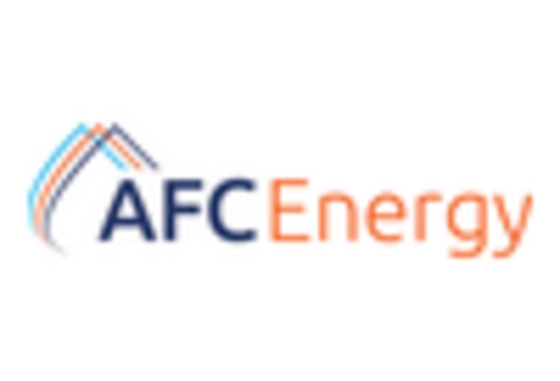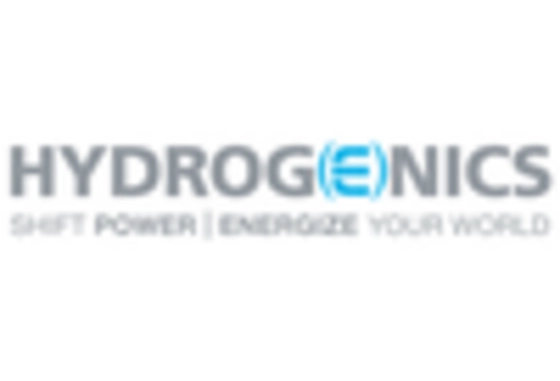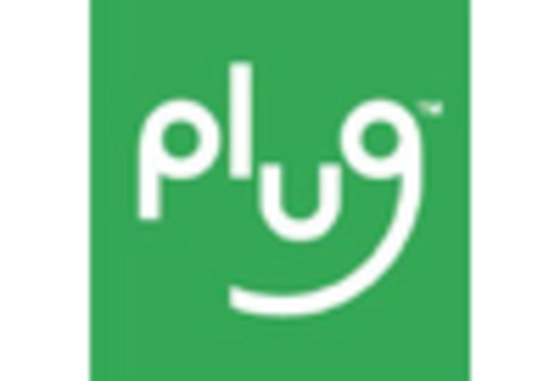Rising Interest in Hydrogen Economy
The Alkaline Fuel Cell Market is poised to benefit from the growing interest in the hydrogen economy. As countries explore hydrogen as a clean energy carrier, alkaline fuel cells are emerging as a key technology for hydrogen utilization. The potential for hydrogen to decarbonize various sectors, including transportation and industrial processes, is driving investments in fuel cell technology. Market data indicates that the hydrogen economy could reach a valuation of over 200 billion by 2030, with alkaline fuel cells playing a significant role in this transition. This burgeoning interest is likely to propel the market forward.
Growing Demand for Backup Power Solutions
The increasing need for reliable backup power solutions is significantly influencing the Alkaline Fuel Cell Market. As power outages become more frequent due to extreme weather events and aging infrastructure, businesses and consumers are seeking dependable energy sources. Alkaline fuel cells offer a clean and efficient alternative for backup power, capable of providing uninterrupted electricity during outages. Market analysis reveals that the demand for backup power systems is expected to rise by 15% annually, with alkaline fuel cells being a preferred choice due to their quick response times and low emissions. This trend is likely to bolster the market further.
Technological Innovations in Fuel Cell Design
Technological advancements play a pivotal role in shaping the Alkaline Fuel Cell Market. Innovations in fuel cell design, such as improved catalysts and membrane technologies, are enhancing the efficiency and durability of alkaline fuel cells. These advancements not only reduce operational costs but also extend the lifespan of the cells, making them more appealing to consumers and industries alike. Market data suggests that the introduction of next-generation alkaline fuel cells could lead to a reduction in production costs by up to 20%, thereby stimulating market growth. As technology continues to evolve, the potential for widespread adoption of alkaline fuel cells increases.
Government Incentives and Regulatory Frameworks
Government support and regulatory frameworks are crucial drivers for the Alkaline Fuel Cell Market. Many governments are implementing policies that promote the use of clean energy technologies, including alkaline fuel cells. Incentives such as tax breaks, grants, and subsidies are encouraging businesses to invest in fuel cell technology. Furthermore, stringent emissions regulations are pushing industries to seek cleaner alternatives, thereby increasing the demand for alkaline fuel cells. Recent market data indicates that regions with robust government support have seen a 30% increase in fuel cell installations, highlighting the importance of policy in driving market growth.
Increasing Adoption of Renewable Energy Sources
The Alkaline Fuel Cell Market is experiencing a notable surge in the adoption of renewable energy sources. As nations strive to meet their energy needs sustainably, the integration of alkaline fuel cells into renewable energy systems appears to be a viable solution. These fuel cells can efficiently convert hydrogen into electricity, making them an attractive option for energy storage and generation. The market data indicates that the alkaline fuel cell segment is projected to grow at a compound annual growth rate of approximately 8% over the next five years. This growth is likely driven by the increasing investments in hydrogen infrastructure and the rising demand for clean energy solutions.

















Leave a Comment